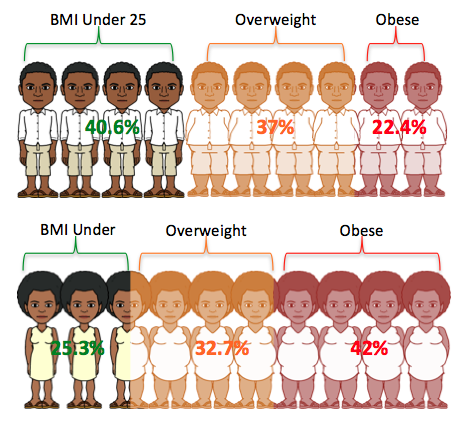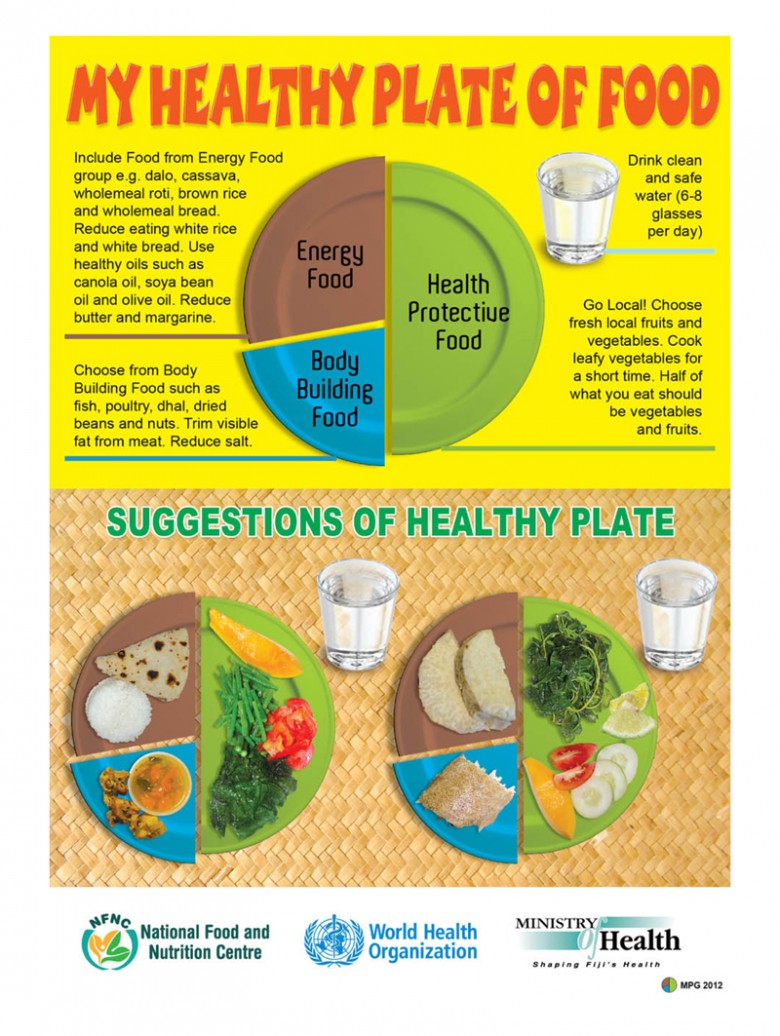Size matters when it comes to food

By - Lauren Houston, Volunteer Nutritionist.
The increase in portion sizes is a major contributor to why more and more Itaukei and Fijians of Indian decent are loosing the battle with obesity and lifestyle diseases such as diabetes. From the latest national STEPs survey (2011) the prevalence of obesity has risen by 8.5% since 2002, with 32.1% of Fijian adults now classified as obese. This is also evident in that Fijians are also getting wider as the average waist circumference of males has risen by 4cm and females 5.2cm. The larger portion size of foods has found to impact significantly on the overall energy (calorie) intake consumed. Therefore, an increase in portion size is a major factor that contributes to the rising rates of overweight and obese individuals.
The right portion size for everyone is slightly different and this ranges depending on an individual’s age, gender, body size and activity level (exercise). However, the large differences in what is called a “typical” portion size between individuals makes it easy for us to lose track of what is actually the right portion size for us. Each individual has their own opinion in regards to the amount of food in a ‘standard’ portion. This adds much confusion to serving sizes and their desired use.
Research continues to show that if bigger portions are served, we will eat them. This is largely due to the approach that we ‘must clear the plate’. “Supersized” food portion sizes are not only increasing inside the home but outside at restaurants and take-away outlets. The distortion of what we think is a “normal” portion size outside the house affects how much we eat at home and the more that is served the more you eat!

Did you know that the best guide that is reliable is right in your hands? Here is a “handy” guide to follow. Compare your current portion size to the recommended below and see if you are over or under consuming.

Carbohydrates - this incudes rice, pasta, noodles, potato, cassava and dalo. Choose an amount the size of your clenched fist.
Protein – this is generally meat and includes – chicken, lamb, fish and eggs. Choose an amount the size of your hands palm and the thickness of your little finger. Individuals consuming meat alternatives such as chickpeas and lentils (French bean, long bean and cow pea), choose an amount that will fit your cupped hand.
Fruit and vegetable – Choose as much as you hold with both hands.
Fat – Limit fat to the amount the size of the tip of your thumb.
Cheese – Less than two fingers.
Butter – Size of your fingertip.

Overcrowding or piling your plate and having lack of portion control will cause you to eat a lot more than you need. Excess calorie intake is stored by the body as fat and therefore, consistent excess calorie intake will in time lead to an increase in weight and increase your risk of obesity, diabetes and hypertension.
By reducing the amount you eat and following the “hand-diet” it will allow you to know exactly how much of a certain food you are eating – its probably a lot more than your think! With people not noticing the increase in portion sizes they are less likely to notice until larger portion sizes become large body sizes too!
What can you do?
Choose appropriate portion sizes to avoid gaining weight.
Eat slowly and learn to recognize when your body feels ‘hungry’, ‘satisfied’ and ‘full’
Consume a wide variety of foods - vegetables, fruit, nuts, meat and whole grains
Reduce fat, salt, sugar and alcohol consumption
Stop eating so much junk and packaged foods! Quality fresh foods are best!